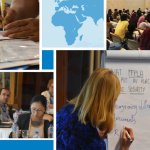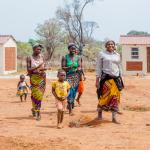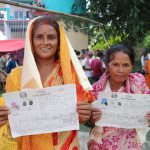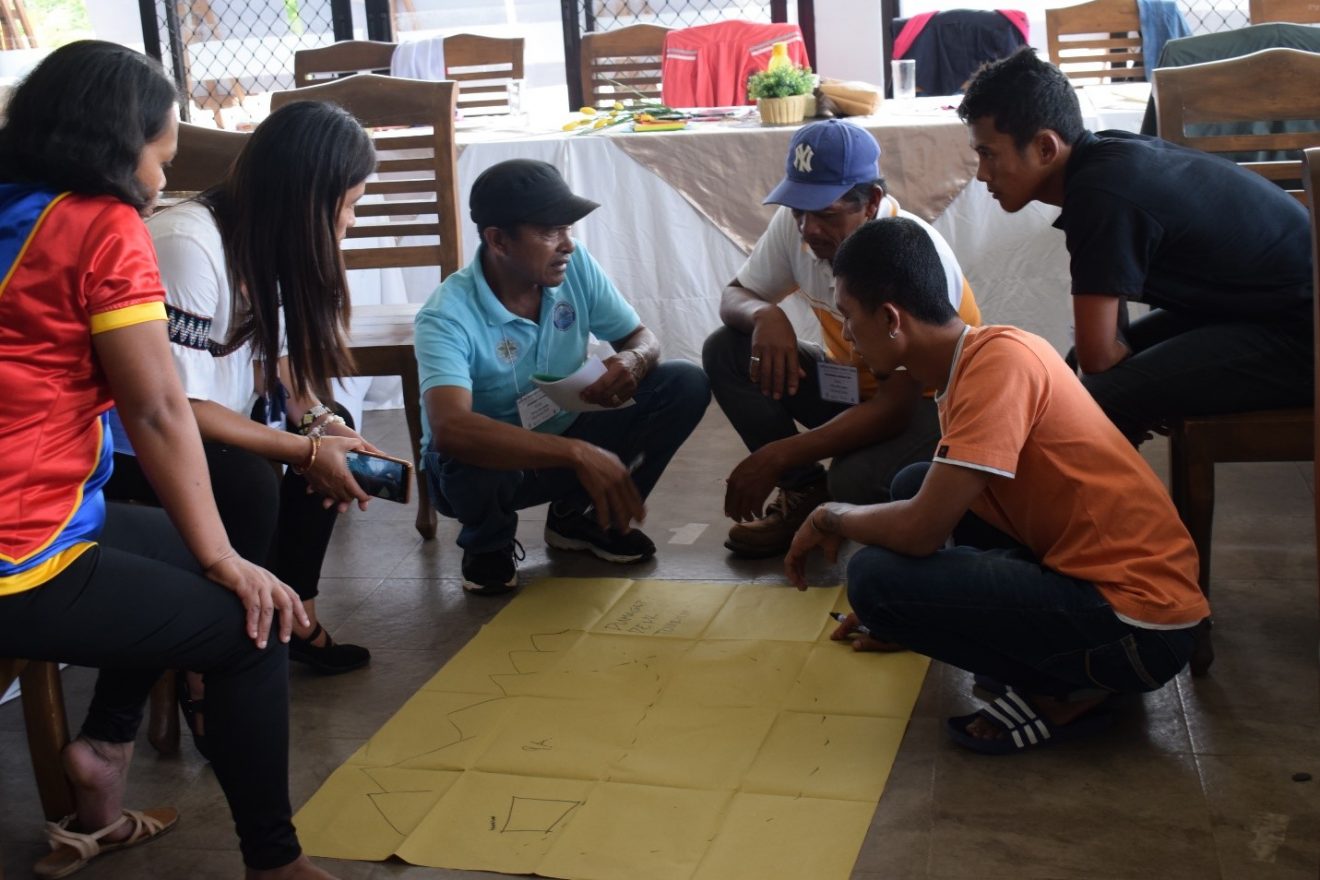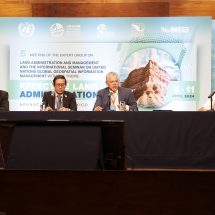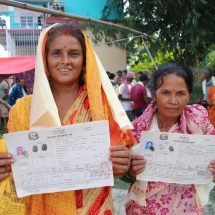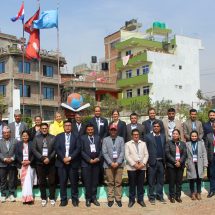The Xavier Science Foundation, Inc. and the Asian NGO Coalition for Agrarian Reform and Rural Development (ANGOC) recently conducted a two part-training series in three Indigenous People’s Organizations in the municipalities of Talakag and Pangantucan in Bukidnon, Philippines. Through this training, 73 stakeholders, of which 31 are women, learnt to apply ‘landscape governance’ approach to address land conflicts, facilitate participatory land use planning, harmonize community and government plans, as well as to recognize the role of women and youth in agriculture. The three-day training focused on (i) landscape governance and (ii) an introduction to GLTN tools and approaches.
According to Thieza Verdijo from XSF, ‘landscape’ has three pillars namely Place, People and Power. ‘Place’ is the circle or the environment that ‘people’ are connected to, either for living, working or as a source of livelihood and basic services to which the biodiversity and the wellbeing of humans is promoted. ‘Power’ relates to how people take care, manage and use the ‘place’. The heart of landscape approaches is landscape governance which refers to how various interests in the landscape are balanced in decision making and how the rules stimulate the sustainable management of the landscape resources. Often, the interests of stakeholders can connect and conflict in a landscape at any given time. Thus ‘integrated landscape governance’ creates a positive impact on managing and reconciling conflicts and competition on agricultural production and natural conservations, through a practical way of connecting actors within the shared space of landscape
LANDSCAPE GOVERNANCE OF INDIGENOUS PEOPLE
According to Dave de Vera a representative from the Philippine Association for Inter-Cultural Development, Inc. (PAFID), who facilitated the training, landscape governance is not new to indigenous communities and has been practiced from time immemorial.
“Indigenous communities do not focus on one aspect of an ecosystem, but on the entire system or landscape and consider themselves to be part of it.” Dave, PAFID
Through interactive sessions, participants identified the following contributions of Indigenous Peoples to landscape governance:
- Traditional Knowledge – in which Indigenous Peoples contribute to research through conducting interviews and learnings from the IPs
- System of protection – in which Indigenous Peoples contribute to deepening of landscape governance through their relationship with the environment which includes spiritual relation (protection of sacred places)
- Indigenous Governance– which refers to patterns and practices of rule by which Indigenous Peoples govern themselves in formal and informal settings and which the most powerful driver for protection through their way of managing their ancestral land. In addition, the main reason as to why protected areas are preserved and not tampered with is because of the presence of IPs in such areas
The participants also identified the challenges faced by Indigenous People’s Organizations regarding the landscape governance:
- The Philippines is losing the broad range of traditional knowledge systems, along with the lifestyle and culture that has been successful in managing natural resources and environmentally critical areas for a very long time.
- In most cases, the government has failed to acknowledge Indigenous Peoples and the role they play in the management and protection of forests and other natural resources.
- There is limited understanding of how Indigenous Peoples govern the landscape – on the part of the government and other sectors within the Philippines- which results to deprivation of rights.
- In most cases, the opinions of Indigenous Peoples are rarely heard and considered in planning and decision-making processes.

This training provided a platform to engage various stakeholders from the government, the civil society and community groups to closely interact with Indigenous Peoples on protecting their rights to live and manage their traditional land. The National Economic Development Authority (NEDA) in Northern Mindanao expressed their support to this initiative and identified areas of synergy. For instance, the land use committee within NEDA is keen to support and provide a venue for discussions on land related issues including policy recommendations.
“In our development efforts, let us converge our resources to come up with something meaningful that will contribute to the inclusive development of our long- term vision; the VISION 2040, for all the Filipinos is to enjoy ang matatag, maginhawa, at panatag na buhay (stable, comfortable and peaceful life)” – NEDA representative.
In the second part of the training, representatives from three Indigenous Peoples Organizations representing different tribes, leaders, members, women, men and youth were introduced to GLTN land tools and approaches such as the Social Tenure Domain Model, the Gender Evaluation Criteria, and Youth and Land Responsiveness Criteria. They increased their awareness on the importance of each sector and the role that each group has in the improvement of the access to land and natural resources tenure security, food security, livelihoods and nutrition. They discussed internal conflicts present at both household and community levels and agreed to identify possible steps and plans for resolving them.
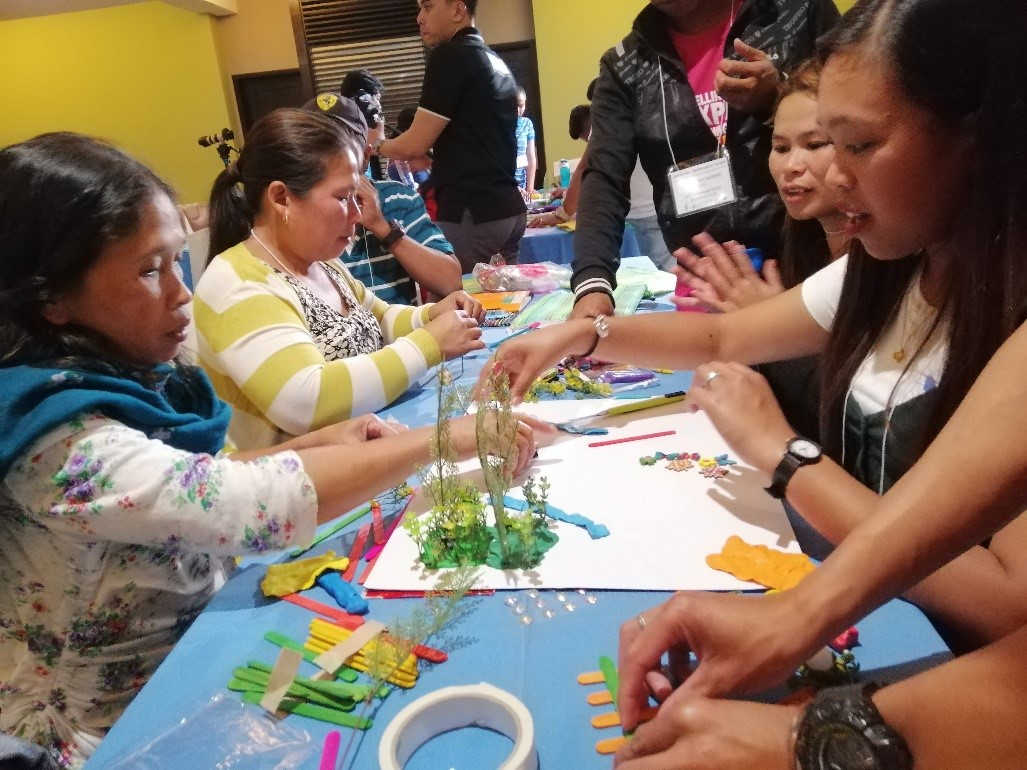
Participants identified women’s limited access to livelihood assets and made recommendations for setting up education and empowerment initiatives to counter this. The youth also shared their own visions and aspirations for their communities.
“I want to be a leader someday so that I can help my tribe to be sustainable and to protect our ancestral land. I wanted to be a leader so that I can inspire more youth to protect and preserve our culture and practices for the future generations” – Melvin, Pangantucan
“I want to be a soldier so that I can protect my tribe from the private businessmen or sectors who are trying to take our lands from us” – Nelson, Pangantucan
Participants made a commitment to take all the lessons they had learnt to their respective communities and to practice effective landscape governance for sustainable livelihoods in the landscape of Mt. Kalatungan.
The training was part of the Secure Access to Land and Resources (SALaR) project, which is funded by the German Federal Ministry for Economic Cooperation and Development (BMZ) and aims at improving land and natural resources tenure security for rural smallholder farmers in Uganda, Laos and the Philippines, most of whom are poor women, men and vulnerable people.




